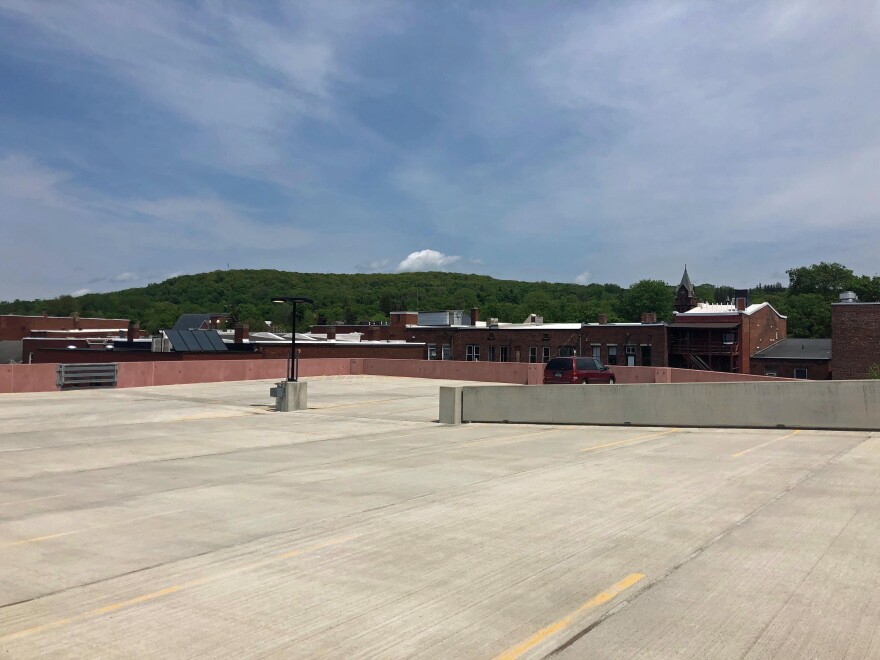Leaders in St. Albans have been sparring with Vermont's state auditor about the city's implementation of a downtown revitalization program. Doug Hoffer says the city isn't playing by the rules, while local officials say Hoffer is trying to change the rules partway through the game.
The recently-released audit examines the city's Tax Increment Financing, or TIF, district. The report is over 100 pages long and outlines recommendations to the city as well as state regulators. Among other findings, it says the city mishandled TIF money and owes the state education fund $111,886.
That figure is very much in contention. However, the possibility of short-changing the education fund has been a major criticism from TIF opponents across Vermont. On the other hand, people who support the TIF program often point to St. Albans's district as a model.
Walking the streets with City Manager Dominic Cloud, it’s clear he’s proud of the transformation his city is undergoing. He said it all started when Walmart came to town.

"We all remember that there was gloom and doom predicted for downtown St. Albans," he said. "And our strategy was, we weren’t gonna out compete them on price. We were gonna out compete them on experience and place-making."
So the city dusted off a shelved downtown revitalization plan from 1981.
Cloud explained, "And here’s what it says: Create a sense of place by building the streetscape project on Main Street. Build a parking garage downtown. See if you can lure a hotel, preferably nationally-branded, out from the interstate to downtown St. Albans, and work to expand your existing businesses. That’s what we’ve done."

The city has torn down blighted properties and partnered with business owners to renovate their facades. They've integrated Taylor Park with the downtown and generally created a pedestrian-friendly small city. Cloud says the city couldn’t have done all that without TIF.
The big idea behind TIF is that municipalities use public funds to make infrastructure improvements that draw private businesses. In theory, property values go up and the increased tax revenue pays off the debt for the public improvements. Cloud said it's working in St. Albans.
"The premise is: if you build it they will come," he said. "The community takes the chance on building it, and we share in the proceeds with the state when they come. And they've came. The TIF is performing gangbusters."
In St. Albans, there's been a 65% increase in tax revenues so far.

It’s a long game. TIF districts have 20 years to pay off the debt and to start paying the full amount of taxes on the higher property values into the statewide education fund. The Vermont Economic Progress Council, or VEPC, approves TIF districts and monitors how municipalities run them. State Auditor Doug Hoffer says that dual role is part of the problem.
"VEPC, in their response to us, and in some other communications and comments, suggest to me that they view themselves in two places at once," he said. "One is a promoter and the other is, not technically a regulator but, an overseer who has responsibility for monitoring these TIFs and assisting them with guidance and opinions and rules. I’m not sure you can do both well."
Megan Sullivan is the executive director of VEPC, and she’s not arguing the auditor’s point.
"And I think the audit raised important questions," said Sullivan, "which VEPC acknowledged in acknowledging the recommendations that we need to better clarify areas that aren’t clear through statute and the current rule to make sure that districts know and that VEPC and VEPC staff and all of our state partners understand what the expectations are."
The St. Albans audit raises questions that could have implications for other TIF districts around Vermont. But it’s not the audit’s findings that has ruffled feathers in St. Albans, according to City Manager Dominic Cloud. It’s how those findings were delivered.
"Literally from the cover through just shy of the recommendations, it’s an antagonistic, adversarial tone," said Cloud. "But when we get to the recommendations it backs off quite a bit. We can live with the recommendations."

Hoffer says he stands behind the report, tone and all.
"This, I think, has value," he said. "I’m sorry that it has upset some people but, hey, that goes with the territory. We’re auditors. What are you gonna do?"






